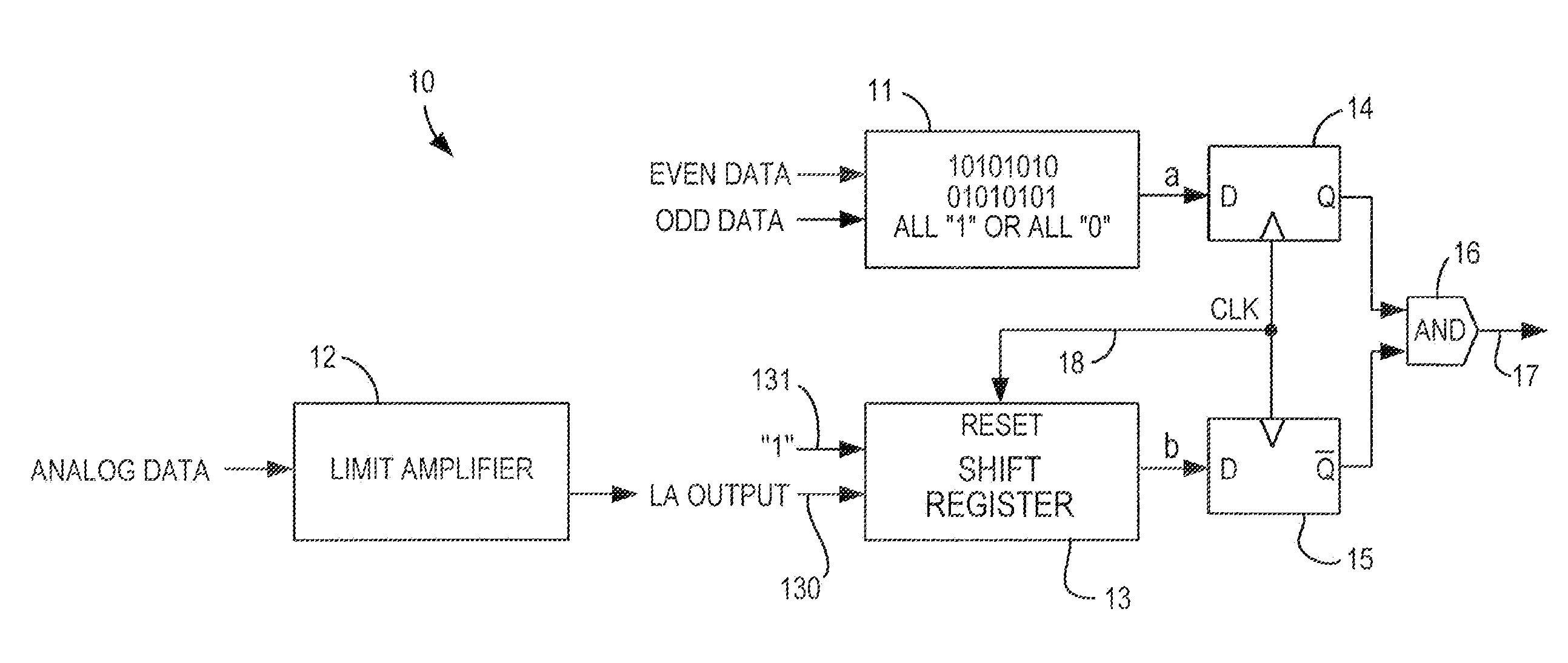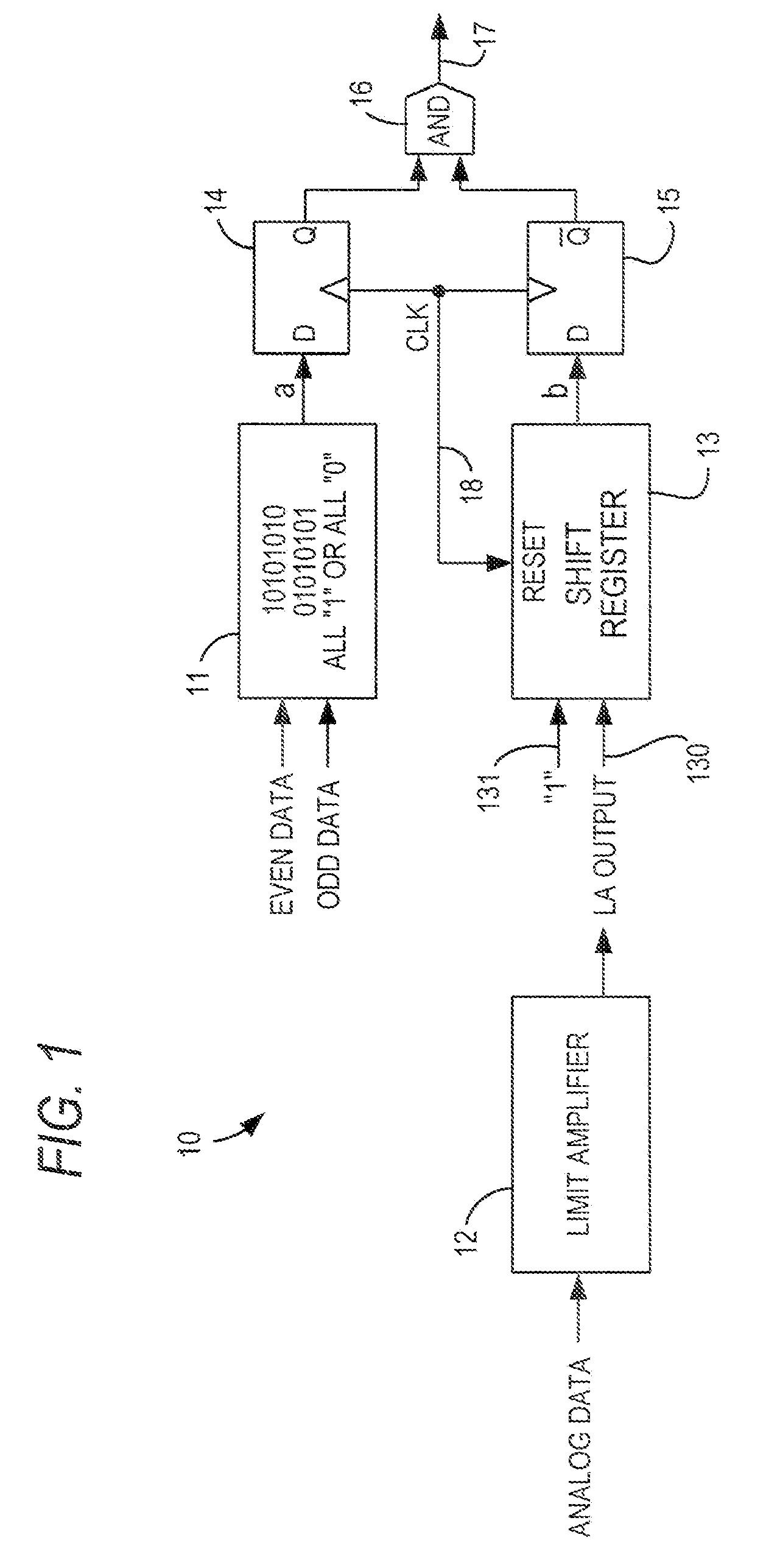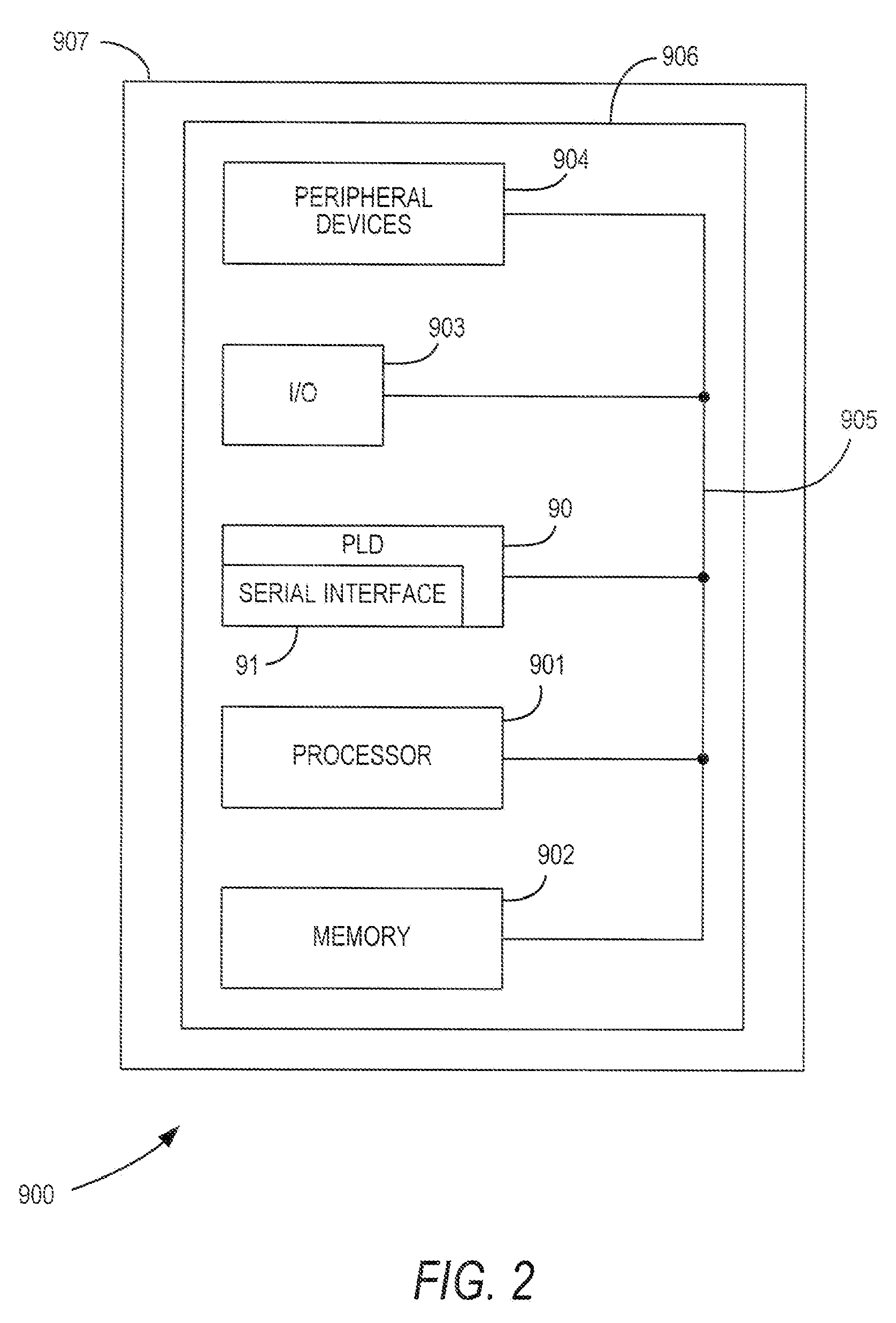Signal loss detector for high-speed serial interface of a programmable logic device
a programmable logic device and serial interface technology, applied in the direction of coding, transmission monitoring, pulse technique, etc., can solve the problems of signal being considered to have been lost, low-voltage threshold detection, and absolute magnitude of signal voltages continuing to decreas
- Summary
- Abstract
- Description
- Claims
- Application Information
AI Technical Summary
Problems solved by technology
Method used
Image
Examples
Embodiment Construction
[0014]As described above, digital detection of signal loss, by comparing incoming data to known patterns which may indicate signal loss, is preferred, particularly as signal voltages decrease (which is a consequence of decreasing integrated circuit device feature size). However, as also described above, a pattern that is a sign of signal loss also may be a legal pattern in some cases. One of those cases is an alternating 1-0 pattern (i.e., “01010101 . . . ” or “10101010 . . . ”) under the PCI-Express protocol.
[0015]In accordance with the present invention, a legal instance of such a pattern can be distinguished from an instance of that pattern indicating signal loss by whether or not analog transitions are detected. Specifically, in double data rate operation, where data is sampled on both rising and falling clock edges, even and odd data samples are produced by different comparators. If the comparators are operating identically, a loss of signal pattern where the data are all 1's o...
PUM
 Login to View More
Login to View More Abstract
Description
Claims
Application Information
 Login to View More
Login to View More - R&D
- Intellectual Property
- Life Sciences
- Materials
- Tech Scout
- Unparalleled Data Quality
- Higher Quality Content
- 60% Fewer Hallucinations
Browse by: Latest US Patents, China's latest patents, Technical Efficacy Thesaurus, Application Domain, Technology Topic, Popular Technical Reports.
© 2025 PatSnap. All rights reserved.Legal|Privacy policy|Modern Slavery Act Transparency Statement|Sitemap|About US| Contact US: help@patsnap.com



